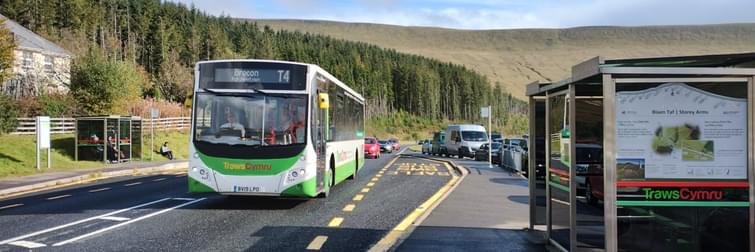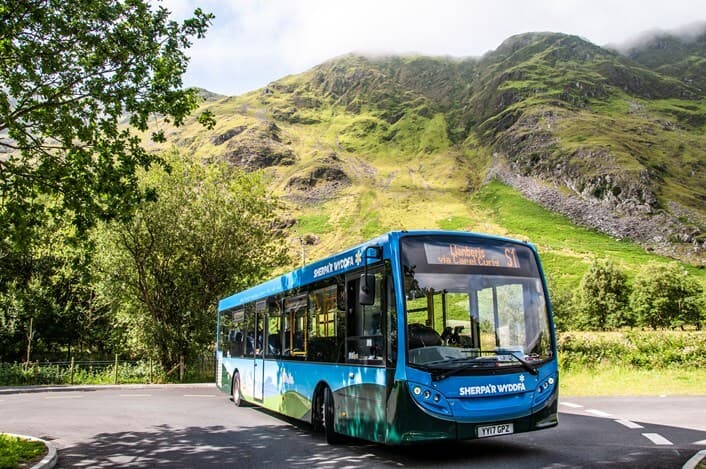
blog: Recent Work on the Development of Rural Transport Strategies
Tuesday 21st February 2023
In recent months I’ve had the pleasure of working on a number of strategic transport projects in areas which attract significant numbers of visitors. As someone who lives close to a city, came into transport planning through my interest in urban geography and typically tries to establish how to enhance transport accessibility in built up areas for weekday travel patterns... developing strategies for sustainable movement in more rural contexts for weekend and holiday seasons has been an interesting experience. There are some common challenges and opportunities we have identified in our recent work in National Parks and other tourism hotspots throughout the UK which will be explored throughout this blog.
Understanding the local context and different travel markets
It is important to gather evidence to understand the different travel needs between residents and visitors. There are also differences in travel demands between areas where visitors tend to stay for longer periods (e.g. Cornwall, Devon, Lake District) compared with areas which are within a reasonable travel distance of a large population meaning that many visitors come for day trips (e.g. Peak District, Brecon Beacons).
Changes to transport needs to be ambitious but should not isolate communities
A key challenge for all public sector organisations is to contribute towards the policy transition to a more sustainable / zero carbon transport system. This is challenging enough in an urban environment where there is a volume of people to make the investment in enhanced walking and cycling infrastructure or bus and tram services financially viable and where distances travelled to work, education, services and play tend to be much shorter. Resident communities within rural areas are typically more reliant on a private vehicle and there is a risk of increasing social isolation and reducing equitable access to shops, services and recreation. Therefore, it is critical that rural strategies find the right blend between ambition and shorter term steps transitioning towards a low carbon transport network.
Developing a common brand and promotional messages
In tourism hotspots there are often a number of public, private and third sector organisations involved in managing and promoting tourism and travel. This provides some fantastic opportunities in the form of generating ideas, a resilient and dedicated workforce to develop initiatives and multiple funding streams to enable progress. However, it does present a number of challenges relating to competing priorities, inconsistencies and more difficult transport and movement issues sometimes falling between the gaps. This article from 2020 shows how complicated it is to consider radical approaches to traffic management and encouraging more trips by sustainable modes in areas where there are multiple bodies responsible for transport.
Partnership working groups with focused actions and responsible owners enable more simple and consistent approaches to be developed for car parking (charges, booking, signage etc), park and ride, public transport services and financial support, cycle / e-mobility hire schemes and active modes infrastructure development.
Park and ride, ideally with co-ordinated parking management and controls
Park and ride at strategic locations, even if solely in peak season, provides an opportunity to ‘intercept’ a high number of visitors on their way to a tourist destination. Whilst this doesn’t solve the zero emissions question from door to door it can substantially reduce the impact on a National Park or other natural area of beauty. This is shown to be most effective where there is a ‘stick’ to complement the Park and Ride in the form of reduced parking availability, higher parking costs and pre-booking.

Successful examples are Snowdon Sherpa, the Lake District Explorer and the North Yorkshire Moorsbus. The Snowdon case study shows particularly well that, even with stringent parking controls, the visitor demand remains but by a more sustainable option.
This returns us to the point about partnership working – all parties involved in providing and promoting parking and transport need to work together to get this right – otherwise an alternative location will open up and undermine the aims of the Park and Ride. It’s also vital that Park and Ride buses are frequent and easy to use so groups have confidence in them and can adapt to changes in their plans quickly if required.
Enhancing the bus offer through enhanced frequency, improved timetabling, fares and ticketing and marketing
Aside from distances and topography, a key reason for many journeys being reliant on the private car in tourist areas is the lack of regular bus services which operate at times of the day people need to use them. This is understandable, given that services in many radial routes in urban context struggle to be commercially viable post 2020 in a world where reduced or less predictable patronage meets spiralling fuel costs for operators. More frequent services, an attractive fare proposition, tickets that can be used on all buses, services that seek to meet common needs of visitors and residents to maximise usage, good information and marketing explaining what is accessible via bus are all needed to enhance the offer of the bus.
Interchange
Timetables between train and bus need to be integrated – enough time to make a connection but not so long it makes journey time unattractive and uncertain. Leisure passengers may generally be willing to take longer than commuters but they still need frequent services and real time information to be assured that their bus is going to turn up. High quality pedestrian routes are also important – signed (or better still intuitive so it’s obvious for visitors where they need to go to), wide footways, and crossings on desire lines.
At interchange points, appropriate facilities are required – bus shelters, seating, timetable and more general visitor information, bus boarding kerbs, toilets and cafés / refreshments.
On a recent visit I was impressed by the facilities at Abergavenny interchange which also included cycle parking, a public bike pump, electric vehicle charging points and a hydrogen vehicle charging point – a truly integrated transport hub.
People like to walk and cycle for leisure
Greenways, canal towpaths and other dedicated infrastructure for walking, cycling, wheeling, jogging and riding tend to be well used and have many benefits, particularly when they serve a dual leisure and utility function. Existing infrastructure such as disused rail lines can provide a relatively low cost and low intervention solution for direct and accessible routes between rural settlements.
Research from Sustrans showed that new or improved cycling and walking infrastructure supports local businesses, has health benefits and results in high value for money in economic appraisals. They also provide the opportunity to boost local economies through attracting more visitors and through trips, particularly when combined with public art or heritage initiatives.
ITP’s is experienced in developing rural transport strategies, public transport and active travel feasibility studies and bids. We’d love to hear your thoughts on rural mobility and chat about how we might be able to help with your projects. Please Get in Touch with Ed Ducker, Tim Edwards, Peter Hardy or Nicola Siddall if you would like to know more.
